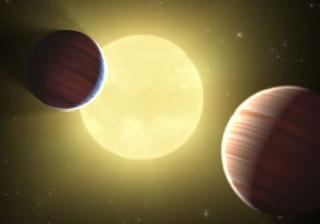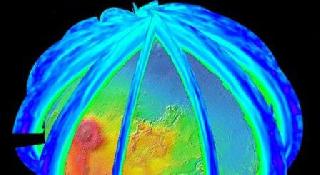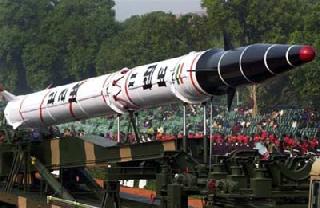
This artist's concept illustrates the two Saturn-sized planets discovered by NASA's Kepler mission. Photo: NASA
WASHINGTON (BNS): NASA's Kepler spacecraft has discovered the first instance of two planets transiting the same star.
The transit signatures of two distinct planets were seen in the data for the sun-like star designated Kepler-9. The planets were named Kepler-9b and 9c.
Scientists have observed the discovery for seven months and have surveyed more than 156,000 stars as part of an ongoing search for Earth-sized planets outside our solar system.
The ultra-precise camera of the spacecraft has measured the reducing brightness of the star that occurs when a planet transits them. Later, the size of the planet was derived from these temporary dips.
The distance of the planet from the star can be calculated by measuring the time between successive dips as the planet orbits the star. Small variations in the regularity of these dips can be used to determine the masses of planets and detect other non-transiting planets in the system.
According to NASA, the observations show Kepler-9b is the larger of the two planets, and both have masses similar to but less than Saturn. Kepler-9b lies closest to the star with an orbit of about 19 days, while Kepler-9c has an orbit of about 38 days. By observing several transits by each planet over the seven months of data, the time between successive transits could be analyzed.
"This discovery is the first clear detection of significant changes in the intervals from one planetary transit to the next, what we call transit timing variations," Matthew Holman, a Kepler mission scientist from the Harvard-Smithsonian Center for Astrophysics in Cambridge, Mass, said.
"This is evidence of the gravitational interaction between the two planets as seen by the Kepler spacecraft."
In addition to the two confirmed giant planets, Kepler scientists also have identified what appears to be a third, much smaller transit signature in the observations of Kepler-9.
That signature is consistent with the transits of a super-Earth-sized planet about 1.5 times the radius of Earth in a scorching, near-sun 1.6 day-orbit. Additional observations are required to determine whether this signal is indeed a planet or an astronomical phenomenon that mimics the appearance of a transit.
 Previous Article
Previous Article Next Article
Next Article












The Indian Air Force, in its flight trials evaluation report submitted before the Defence Ministry l..
view articleAn insight into the Medium Multi-Role Combat Aircraft competition...
view articleSky enthusiasts can now spot the International Space Station (ISS) commanded by Indian-American astr..
view article